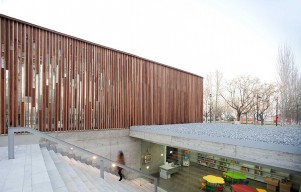In the vast realm of architecture, a profession traditionally dominated by men, the remarkable contributions of women often go overlooked or underappreciated. Despite strides toward gender equality in various fields, architecture remains a stronghold of male dominance, evident in the widening gender pay gap, all-male conference panels, and entrenched macho culture on construction sites. Yet, amidst these challenges, a groundbreaking book titled "100 Women: Architects in Practice" emerges as a beacon of change, celebrating the extraordinary achievements of female architects worldwide.
Redefining Success in Architecture
The fact that this publication even exists at all emphasizes how important it is that there be more women in the field of architecture. The book, written by Harriet Harriss, Naomi House, Monika Parrinder, and Tom Ravenscroft, attempts to question the status quo and showcase women's abilities. It is an essential tool for architects who make decisions, encouraging them to broaden their perspectives and vary the types of voices they consider.
Diverse Perspectives Shaping the Built Environment
More than just a directory of female architects, "100 Women" embodies a paradigm shift in architectural discourse. It seeks to decolonize the profession by redefining success metrics and elevating alternative forms of spatial practice. Through diverse projects ranging from community-led initiatives in Bangladesh to activism against urban development in Uzbekistan, the book highlights the multifaceted roles of women in shaping our built environment.
Also Read: Exploring an Architect's Dream of Impossible Buildings
One such trailblazer is Suhailey Farzana, whose work in Bangladesh extends beyond conventional architectural practice. Farzana challenges traditional notions of authorship and agency in architecture by empowering local communities to design and build their own infrastructure, including much-needed women's toilets. Similarly, Takhmina Turdialieva in Uzbekistan advocates for socially conscious design through grassroots activism, amplifying the voices of young architects in reimagining their cities.
Global Perspectives on Architectural Practice
The book's global perspective encompasses a diverse array of projects and practices, from the mirrored towers of Kyiv to humanitarian efforts in Africa. Common themes emerge through interviews with each architect, emphasizing the importance of context, collaboration, and cultural sensitivity in architectural design. Mariam Issoufou Kamara, based in Niger, embodies this ethos, striving to create a universal approach to architecture rooted in local traditions and materials.
Amidst this celebration of individual achievements, the book also acknowledges the systemic barriers women face in the profession. Sarah Lynn Rees, of the Palawa people in Tasmania, highlights the role of architecture in reclaiming Indigenous identity and challenging colonial structures. Similarly, Māori architect Elisapeta Heta in New Zealand champions Indigenous perspectives in design, integrating Māori principles into large-scale infrastructure projects.
Critiquing Hero Culture
While "100 Women" celebrates the accomplishments of female architects, it also critiques the hero culture that often prevails in architecture. By spotlighting individual narratives, the book risks overshadowing the collaborative nature of architectural practice. Nevertheless, it catalyzes change, inspiring a new generation of architects to challenge gender norms and embrace diverse perspectives.
In the end, "100 Women: Architects in Practice" is a manifesto for a more diverse and equal architectural profession rather than merely a book. We are getting closer to a time when diversity will be embraced as the foundation of creativity, and talent will be recognized regardless of gender as the voices of inspirational women continue to change the face of architecture around the globe. Thus, even though the book's title might eventually sound as strange as a list of left-handed or ginger-haired architects, its influence will live on as a reminder of the revolutionary role that women have played in architecture.
Related Article: Aedes Architecture Forum Unveils Zhu Pei's 'Poetic Imaginations' at Berlin
















